Updated July 2016
This post is made up of background material I gathered for an article on the history of Home Street, between Portage Avenue and Sargent Avenue, for the Jan / Feb 2010 edition of the now defunct community newspaper West Central Streets.
According to Mosaic, one of the "bibles" of Winnipeg street name origins, Home Street is named for Robert H. Home. Born in Ontario, he came to Manitoba to farm in the Virden area around 1883 and served in a variety of civil servant positions, including as deputy sheriff for the Central Judicial District based in Portage la Prairie. He served as sheriff from 1916 to 1939.
This claim is doubtful as the first mentions of Home Street in local newspapers appear in 1882, the year before he arrived in Manitoba. There appears to be no prior connection between Mr. Home and Winnipeg.
Map of area c.1910 (source)
West Central Winnipeg streets had two very distinct personalities until the early 1900s.
South of Portage Avenue, the land was part of the HBC reserve and much of it had been doled out over the years as river lots. The proximity to the Assiniboine River meant access to water for irrigation and transportation route. The land owners did well.
A small community formed, focused around the Parish of St. James near the river. This is still the legal name of the area used in land documents.
Portage Avenue was the dividing line between the old HBC land and the province of Manitoba. Cut off from the river, this area remained little more than pasture land for decades to come.
October 1882 Manitoba Free Press
In 1881, the area around Home Street became part of the city of Winnipeg after the city's boundaries were extended from what is now Maryland Street to around present-day St. James Street.
Once gobbled up by the city, landowners began to sell off their property as extremely valuable urban lots. The city graded what was first called Home Avenue, (the city didn't come up rules as to what was called a "street" or an "avenue" until the 1890s), in the summer of 1882.
In 1882, ads by auctioneer J.S. Coolican touted the sale of at least 1,000 lots along Home. between Portage Avenue and Notre Dame, indicating that successful these auctions were is unclear as the ads continued for months. Most of the plots would have been purchased as speculative properties.
Grading a street does not make it a great place to live. In 1883 there are no addresses listed on Home. By 1888 there were just 15 people living on Home, all clustered around Portage Avenue.
February 9, 1911 Winnipeg Free Press
In 1911 Home Street nearly lost it's name !
Home and Horne streets were in the same proximity. The names, especially when hand-written, were often confused for each other. The last straw came in February 1911 when a case of beer was mistakenly delivered to the home of a prominent Temperance Union member on Home Street rather than the eager beer drinker on Horne Street.
A fuss was raised and council agreed to rename one of the streets. Likely because they did not want to further inconvenience the temperance leader, they chose to rename Horne to Evanson.
At the same time they changed the name of another pair of streets that were often confused: Victor and Vickers. Vickers was renamed Huntleigh.
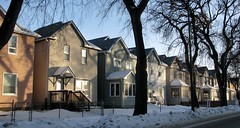
Home Street Church
Home Street Church began as a small mission at the corner of Home and Livinia (now St. Matthews), an offshoot of St. Stephen's Presbyterian Church. In 1907 under the leadership of Hugh John Robertson they became a stand-alone Presbyterian congregation. Their small building was moved to this site in 1909.
The congregation continued to grow and the church hired architect John H.G. Russel to deisign a new one. In 1920 the current Home Street Church opened, (click image above to read the full souvenir program). A group called the Winnipeg Bergthler Church, founded in 1957, purchased the building in 1973 and changed their name to the Home Street Mennonite Church.
A Titanic Connection
A pair of real estate agents who sold a great deal of land along Home Street when it was subdivided in 1906 were Waugh and Beattie.
By 1911 Richard Waugh, (also see), had become Mayor of Winnipeg. Thomson Beattie then took over the company and was doing so well that he took a luxury European vacation in the winter of 1912. On his return in the spring, he wrote to his mother in Winnipeg that he would be “changing ships and coming home in a new, unsinkable boat." it was the RMS Titanic.
Beattie made it into one of the last lifeboats but died of exposure in the Atlantic. He was 36 years old.
More images of Home Street (see the gallery here)
















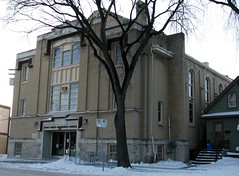


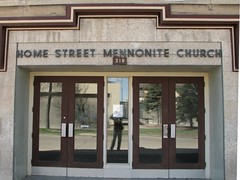
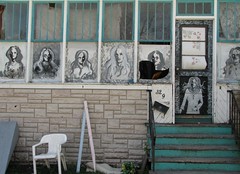
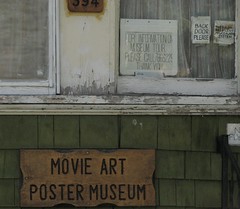
2 comments:
Possibly too much information.. :)
Seriously though, yet another great article Christian!
Yeah, alex it was a lot. I was helping to come up with ideas so I threw everything in I could find to see what was of interest to the writer.
Post a Comment